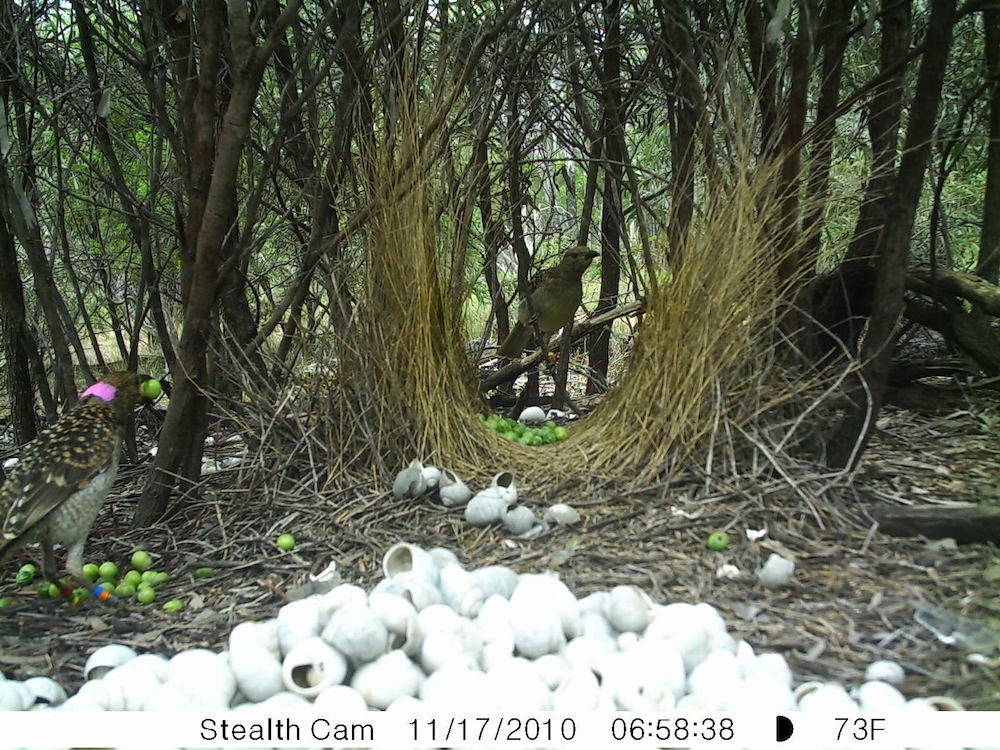Accidental Gardeners: Birds Cultivate Pretty Plants

So-called bowerbirds are known to build elaborate branch-and-vine structures to attract their mates. Now, new research shows that this family of birds may also be accidental gardeners.
Male bowerbirds decorate their nest structures, or bowers, with brightly colored objects, including fruit from the potato bush plant. After the fruit shrivels, the birds toss it aside. The result is a lush garden around the bower. The birds even engage in accidental genetic engineering, picking the greenest fruits of the potato bush plant as décor. As a consequence, the potato bush fruits around bowers are greener than potato bush fruits growing elsewhere.
Inadvertent or not, these bower gardens establish the bowerbirds as the only species known to "cultivate" plants for uses other than food, said study researcher Joah Madden of the University of Exeter in the United Kingdom.
"Until now, humans have been the only species known to cultivate plants for uses other than food," Madden said in a statement. "We grow plants for all kinds of things — from drugs, to clothing, to props that we use in our sexual displays such as roses — but it seems we are not unique in this respect."
Bowerbirds are talented architects in general. Earlier work has shown that the birds construct their bowers so that they look bigger than they really are when sitting in them. They clear litter and leaves from around their bowers, protecting them from fire — and, it turns out, creating the perfect space for a "garden."
Madden and his colleagues studied bowerbirds in Taunton National Park in central Queensland, Australia. They observed that there were more potato bushes (Solanum ellipticum) around bowers than in surrounding areas. These purple-flowered, green-fruited plants are also known as "bush tomatoes."
The researchers established that the birds weren't choosing locations based on high concentrations of potato bushes; rather, the bowers predated the extra bushes. The researchers reported their work in the April 24 issue of the journal Current Biology.
Get the world’s most fascinating discoveries delivered straight to your inbox.
"We do not believe bowerbirds are intentionally growing these plants, but this accumulation of preferred objects close to a site of habitation is arguably the way any cultivation begins," Madden said. "It will be very interesting to see how this mutually-beneficial relationship between bowerbirds and these plants develops."
You can follow LiveScience senior writer Stephanie Pappas on Twitter @sipappas. Follow LiveScience for the latest in science news and discoveries on Twitter @livescience and on Facebook.

Stephanie Pappas is a contributing writer for Live Science, covering topics ranging from geoscience to archaeology to the human brain and behavior. She was previously a senior writer for Live Science but is now a freelancer based in Denver, Colorado, and regularly contributes to Scientific American and The Monitor, the monthly magazine of the American Psychological Association. Stephanie received a bachelor's degree in psychology from the University of South Carolina and a graduate certificate in science communication from the University of California, Santa Cruz.


